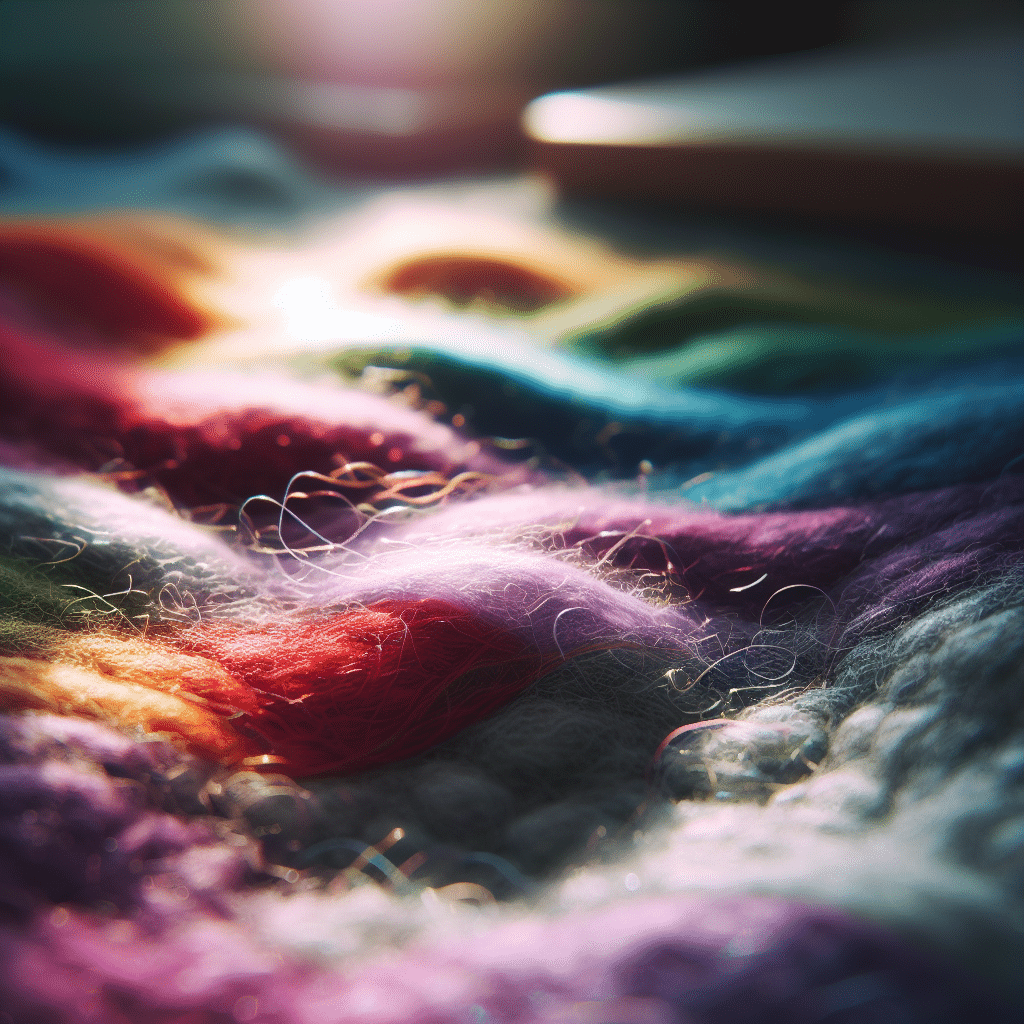Felt is a dense, durable fabric that is created through a process of matting, condensing, and pressing fibers together. Traditionally made from wool fibers, felt can also be produced using synthetic fibers like polyester and acrylic. This fabric is unique due to its non-woven structure, which gives it remarkable insulating properties, versatility, and a wide range of applications. Felt is used in crafting, industrial applications, clothing, and home decor, making it an essential material in various industries. Its ability to retain shape without fraying edges makes it a favored choice for both functional and artistic purposes.
1. Understanding Felt: Definition and Composition
Felt is defined as a textile that is produced by compressing and matting fibers, primarily wool, but also synthetic fibers. The composition of felt involves intertwining the fibers through both mechanical and thermal processes, resulting in a thick and sturdy material. The unique process of felting allows for the production of a fabric that is devoid of a specific grain or direction, distinguishing it from woven materials.
2. The History of Felt
The origins of felt can be traced back thousands of years, with evidence suggesting its use in ancient civilizations, including the Egyptians and Mongols. Historically, felt was used for garments, tents, and protective coverings, owing to its insulation properties and durability. The nomadic cultures of Central Asia, in particular, relied heavily on felt, crafting yurts and clothing to withstand harsh climates. Over time, the techniques of producing felt have evolved, incorporating modern methods, yet the core principles remain rooted in tradition.
2.1 Historical Manufacturing Techniques
Earlier methods of felt production involved manual processes, where wool fibers were layered, soaked in water, and agitated until they matted together. As technology advanced, mechanized methods were introduced, allowing for mass production and diverse applications.
3. Types of Felt
Felt can be categorized into several types based on the fibers used and the manufacturing process.
3.1 Wool Felt
This type is made from 100% wool fibers and is known for its softness, warmth, and ability to be dyed in vibrant colors. Wool felt is commonly used in crafts and high-quality garments.
3.2 Synthetic Felt
Produced using synthetic fibers such as polyester, synthetic felt is durable, water-resistant, and often used in industrial applications, insulation, and crafting materials.
3.3 Blended Felt
This variety combines wool and synthetic fibers, offering a balance of durability and softness suitable for a wide range of applications.
4. The Process of Making Felt
The felt-making process can be broken down into several key steps, whether performed manually or through machinery.
4.1 Fiber Preparation
Wool fibers are first cleaned and carded to separate and align them for the felting process.
4.2 Matting and Moistening
The aligned fibers are layered and moistened with water and soap. The moisture and heat help to open up the fibers, facilitating their entanglement.
4.3 Aggitation
This step involves applying pressure and friction to encourage the fibers to interlock, creating a strong mat. This can be done by hand or using machines designed for felting.
4.4 Drying and Finishing
Once the desired thickness and density are achieved, the felt is rinsed, dried, and may undergo additional treatment to enhance texture or finish.
5. Applications of Felt
Felt’s unique properties make it suitable for a diverse array of applications, including:
5.1 Crafting
Felt is a favorite among crafters for making items like toys, decorations, and educational materials due to its ease of use and colorful appearance.
5.2 Industrial Uses
In industrial settings, felt is used for insulation, gaskets, and soundproofing materials because of its ability to absorb sound and temperature variations.
5.3 Fashion and Accessories
Felt is often rendered into hats, bags, and footwear, providing a unique texture and insulation properties in clothing design.
5.4 Home Décor
Felt is popular in home decor for wall hangings, rugs, and felted artworks, enhancing aesthetic appeal and warmth within interiors.
6. Care Instructions for Felt
Felt requires specific care to maintain its integrity and appearance:
- Hand Washing: Clean felt items with mild soap and cold water, avoiding agitation that can cause shrinking.
- Dry Flat: It’s essential to reshape and dry felt flat to prevent distortion.
- Avoid Heat: Keep felt away from direct heat sources to maintain its structure.
7. Frequently Asked Questions
7.1 Is felt waterproof?
Felt can be somewhat water-resistant, especially if made from synthetic fibers. However, it is not completely waterproof, particularly wool felt, which can absorb moisture.
7.2 Can felt be washed?
Yes, felt can be washed, but it’s best to do so by hand using cold water and mild soap to prevent damage or shrinking.
7.3 How is felt used in children’s toys?
Felt is commonly used in children’s toys due to its softness, safety, and vibrant colors, making it an ideal material for educational and creative play items.
7.4 What makes felt eco-friendly?
Wool felt is biodegradable and can be sourced from sustainable sheep farming practices, making it an eco-friendly choice among textiles.
8. Conclusion
Felt is a remarkable textile that has transcended its humble origins to become a significant material in both industrial and creative sectors. With its rich history and diverse applications, felt remains a vital part of our everyday lives, combining functionality, artistry, and environmental consciousness. Understanding the intricacies of felt and its production enhances appreciation for this versatile fabric.



